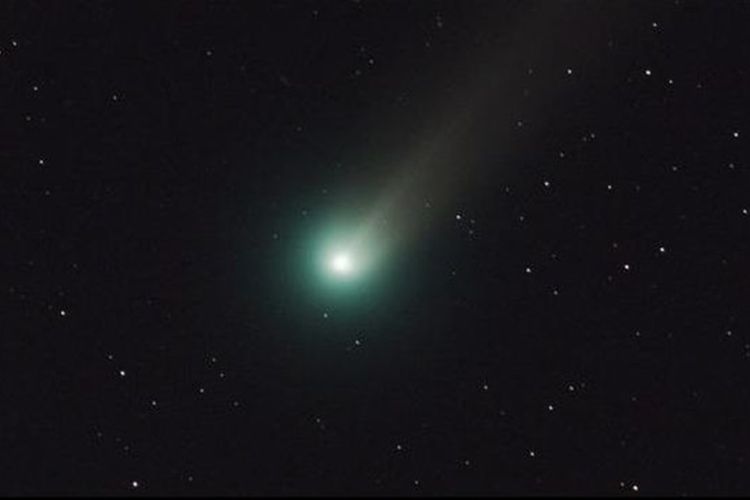In April, we are expecting as many as two new moons, and the last of them, falling on April 30, will be accompanied by a partial solar eclipse, not visible from the territory of Ukraine. At the end of the month, comet PanSTARRS (C/2021 O3) will appear in the evening sky — it can be seen with small amateur telescopes, and possibly with the naked eye. But noticeably better conditions for its visibility will come in May. Also in the second half of April, Mercury, the planet closest to the Sun, will be clearly visible above the western horizon in the evenings.

April 1
- Luna nova (New Moon)
April 3
- The Moon is 1° south of Uranus (5,9ᵐ)
- Mercury is in upper conjunction with the Sun
April 5
- Mars (1.0ᵐ) 0.3° south of Saturn (0.9ᵐ)
- The Moon is 6° north of Aldebaran (α Taurus, 0.8ᵐ)
April 7
- The Moon is at apogee, 404,437 km from the center of the Earth
April 9
- The Moon is in the phase of the first quarter
- The Moon is 3° south of Pollux (α Gemini, 1,2ᵐ)
April 12
- Jupiter (-2.1ᵐ) 0.1° north of Neptune (7.9ᵐ)
- The Moon is 4° north of Regulus (α Leo, 1,3ᵐ)
April 16
- Full moon. The Moon is 4° north of Spica (α Virgo, 1.0ᵐ)
April 17
- Mercury (-1.0ᵐ) 2° north of Uranus (5.8ᵐ)
April 19
- The Moon is at perigee, 365 142 km from the center of the Earth
April 20
- The Moon is 3° north of Antares (α Scorpio, 1.0ᵐ)
April 21
- Comet C/2021 O3 PanSTARRS (5.0ᵐ) at perihelion, 1.287 au (193 million km) from the Sun
April 22
- Maximum activity of the Lyrid meteor shower (up to 20 meteors per hour)
April 23
- The Moon is in the last quarter phase
April 25
- The Moon is 5° south of Saturn (0.9ᵐ)
April 26
- The Moon is 4° south of Mars (0.9ᵐ)
April 27
- Venus (-4.1ᵐ) is 0.1° north of Neptune (7.9ᵐ). The Moon is 4° south of both planets
- The Moon is 6° south of Jupiter (-2.1ᵐ)
April 29
- Mercury in the greatest eastern elongation (20.6°)
April 30
- Luna nova (New Moon). Partial solar eclipse (visible in the Southern Hemisphere)

